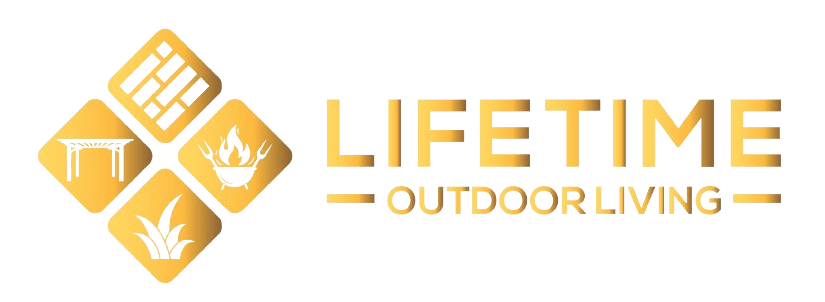Lawn Turf for Hot Climates: The Ultimate Guide for Orange County Homeowners
For homeowners in Orange County, California, selecting the appropriate lawn turf for hot climates is essential to maintaining a vibrant, healthy landscape year-round. With the region’s characteristic Mediterranean climate featuring hot, dry summers and mild winters, your turf selection directly impacts not only your home’s curb appeal but also your water bill and maintenance requirements.
The right lawn turf for hot climates can transform your Orange County property while withstanding the challenges of prolonged heat and drought conditions. Whether you’re planning a complete front yard renovation or enhancing your backyard living space, understanding which grass varieties thrive in our local climate is the first step toward creating a sustainable, beautiful lawn.
Get Free Estimate
Fill the form & we will call back!
Top Lawn Turf Varieties for Hot Climates in Southern California
Bermuda Grass: The Heat-Loving Standard
Bermuda grass has earned its reputation as one of the most resilient lawn turf options for hot climates. This warm-season grass establishes quickly, creating a dense, carpet-like appearance that can withstand heavy foot traffic—ideal for active Orange County families.
Key Benefits:
- Exceptional heat and drought tolerance
- Quick recovery from wear and damage
- Fine to medium texture with rich green color
- Excellent for full-sun exposure areas
Bermuda grass does require regular maintenance to prevent it from becoming invasive, and it performs best with consistent sunshine, making it less suitable for heavily shaded areas.
Zoysia Grass: Balance of Beauty and Durability
Zoysia grass offers Orange County homeowners a compelling middle ground between aesthetic appeal and resilience to hot climates. Its dense growth pattern naturally suppresses weeds and creates a soft, cushioned surface underfoot.
Key Benefits:
- Moderate to good drought tolerance once established
- Excellent heat resistance
- Lower maintenance requirements than many alternatives
- Good shade tolerance compared to other warm-season grasses
While zoysia establishes more slowly than Bermuda grass, its patience-rewarding qualities make it an excellent lawn turf for hot climates where sustainability is a priority.
Buffalo Grass: The Native Low-Maintenance Option
For Orange County homeowners seeking an eco-friendly lawn turf for hot climates, buffalo grass offers significant advantages. As a North American native, it has evolved to thrive with minimal irrigation once established.
Key Benefits:
- Exceptional drought tolerance
- Minimal fertilization needs
- Naturally slow growth requiring less frequent mowing
- Blue-green color that complements California landscapes
Buffalo grass creates a more natural, less manicured appearance than some alternatives, which may appeal to homeowners looking for a more sustainable, native plant aesthetic.
St. Augustine Grass: For Partial Shade Areas
While many lawn turfs for hot climates struggle in shadier spots, St. Augustine grass offers better performance in areas with partial shade, making it valuable for properties with mature trees or structures that cast shadows.
Key Benefits:
- Good heat tolerance
- Superior shade adaptation compared to other warm-season grasses
- Lush, broad-bladed appearance
- Aggressive growth that helps crowd out weeds
St. Augustine requires more water than some alternatives but can be an excellent choice for specific areas of your Orange County property where shade presents challenges.
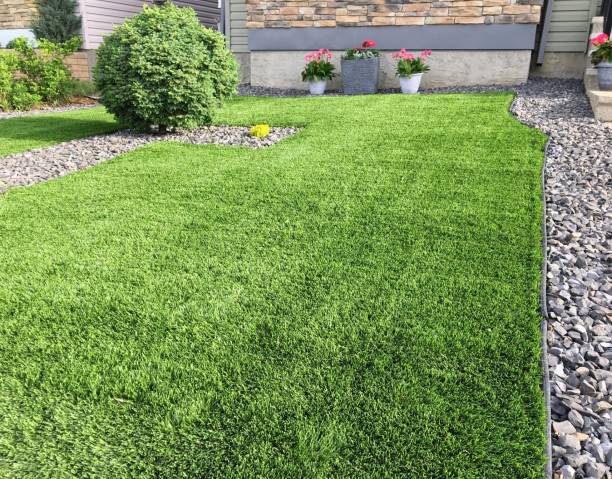
Installing Lawn Turf for Hot Climates in Orange County
Site Preparation: The Foundation of Success
Proper preparation is crucial when installing lawn turf for hot climates. For Orange County properties, this begins with:
- Soil testing to determine pH and nutrient levels
- Removing existing vegetation and debris
- Addressing drainage issues that could affect lawn health
- Incorporating organic matter to improve soil structure
- Leveling the area to prevent water pooling
Many Orange County renovation projects benefit from adding a layer of quality topsoil before installation, especially in areas where construction may have compacted or depleted native soil.
Sod vs. Seed: Making the Right Choice
When installing lawn turf for hot climates, Orange County homeowners can choose between sod (pre-grown turf) or seeding:
Sod Benefits:
- Immediate visual impact
- Faster establishment
- Better erosion control
- Fewer weed problems initially
- Ideal for spring and fall installations
Seed Benefits:
- Lower initial cost
- Wider variety selection
- Better root development long-term
- Can be more drought-resistant once established
For front yard renovations where immediate curb appeal matters, sod often provides the quickest transformation. For larger backyard projects, seeding may offer cost advantages for budget-conscious homeowners.
Installation Timing for Southern California
The best times to install lawn turf for hot climates in Orange County are typically:
- Spring (March-May): Allows establishment before summer heat
- Fall (September-October): Takes advantage of cooler temperatures while soil remains warm
Installing during these optimal windows significantly increases success rates and reduces water requirements during the critical establishment phase.
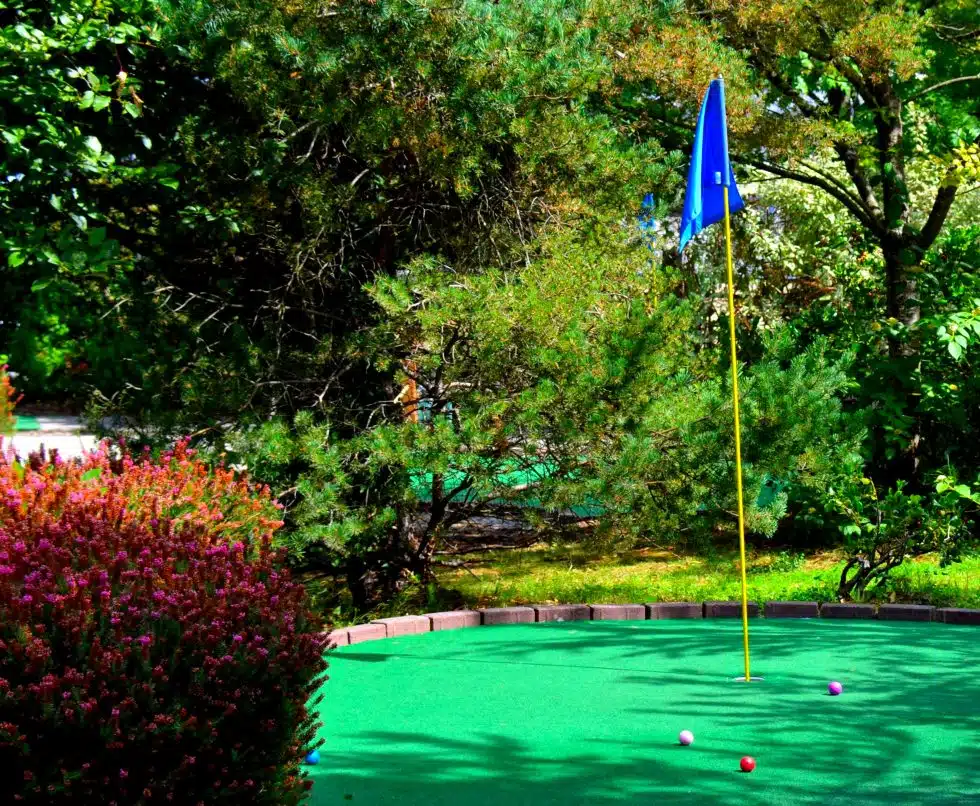
Maintaining Lawn Turf for Hot Climates in Orange County
Water-Efficient Irrigation Strategies
Proper irrigation is perhaps the most critical factor in maintaining healthy lawn turf for hot climates. For Orange County properties, consider:
- Installing smart irrigation controllers that adjust to weather conditions
- Watering deeply but infrequently to encourage deep root growth
- Irrigating during early morning hours to minimize evaporation
- Using drip irrigation or high-efficiency rotary nozzles
- Conducting regular system checks to prevent waste
Most warm-season grasses benefit from receiving about 1-1.5 inches of water weekly during growing seasons, though requirements vary by specific turf variety and soil conditions.
Seasonal Mowing Adjustments
Mowing practices should adapt to seasonal changes for optimal lawn turf health in hot climates:
- Spring: Gradually lower cutting height to recommended level
- Summer: Raise cutting height by 0.5-1 inch to increase drought resistance
- Fall: Maintain summer height until growth slows
- Winter: For evergreen varieties, raise height slightly to increase insulation
Always follow the “one-third rule”—never remove more than one-third of the grass blade height in a single mowing session.
Fertilization for Sustained Growth
Effective fertilization programs for lawn turf in hot climates like Orange County typically include:
- Soil testing before establishing fertilization schedules
- Using slow-release nitrogen sources to prevent rapid growth flushes
- Applying higher potassium levels before stress periods
- Reducing nitrogen applications during peak summer heat
- Following local water quality regulations regarding fertilizer application
Most warm-season grasses benefit from 2-4 pounds of nitrogen per 1,000 square feet annually, applied in split applications during active growth periods.
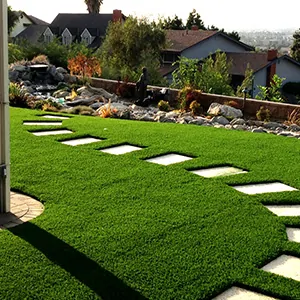
Common Challenges for Lawn Turf in Hot Climates
Drought Management Strategies
During inevitable drought periods, Orange County homeowners can employ these techniques to preserve lawn turf in hot climates:
- Implementing deficit irrigation (strategically reduced watering)
- Applying wetting agents to improve water penetration
- Increasing mowing height to shade soil and reduce evaporation
- Limiting traffic on drought-stressed areas
- Considering temporary dormancy as a natural survival mechanism
Remember that properly selected lawn turf for hot climates will naturally enter dormancy during extreme conditions, turning brown but remaining alive at the crown and root levels.
Pest and Disease Prevention
Common issues affecting lawn turf in Orange County’s hot climate include:
Pests:
- Grubs
- Chinch bugs
- Armyworms
- Sod webworms
Diseases:
- Brown patch
- Dollar spot
- Pythium blight
- Rust
Regular monitoring, proper irrigation timing, and maintaining thatch below half an inch can significantly reduce these problems. When intervention becomes necessary, consider biological controls before chemical applications.
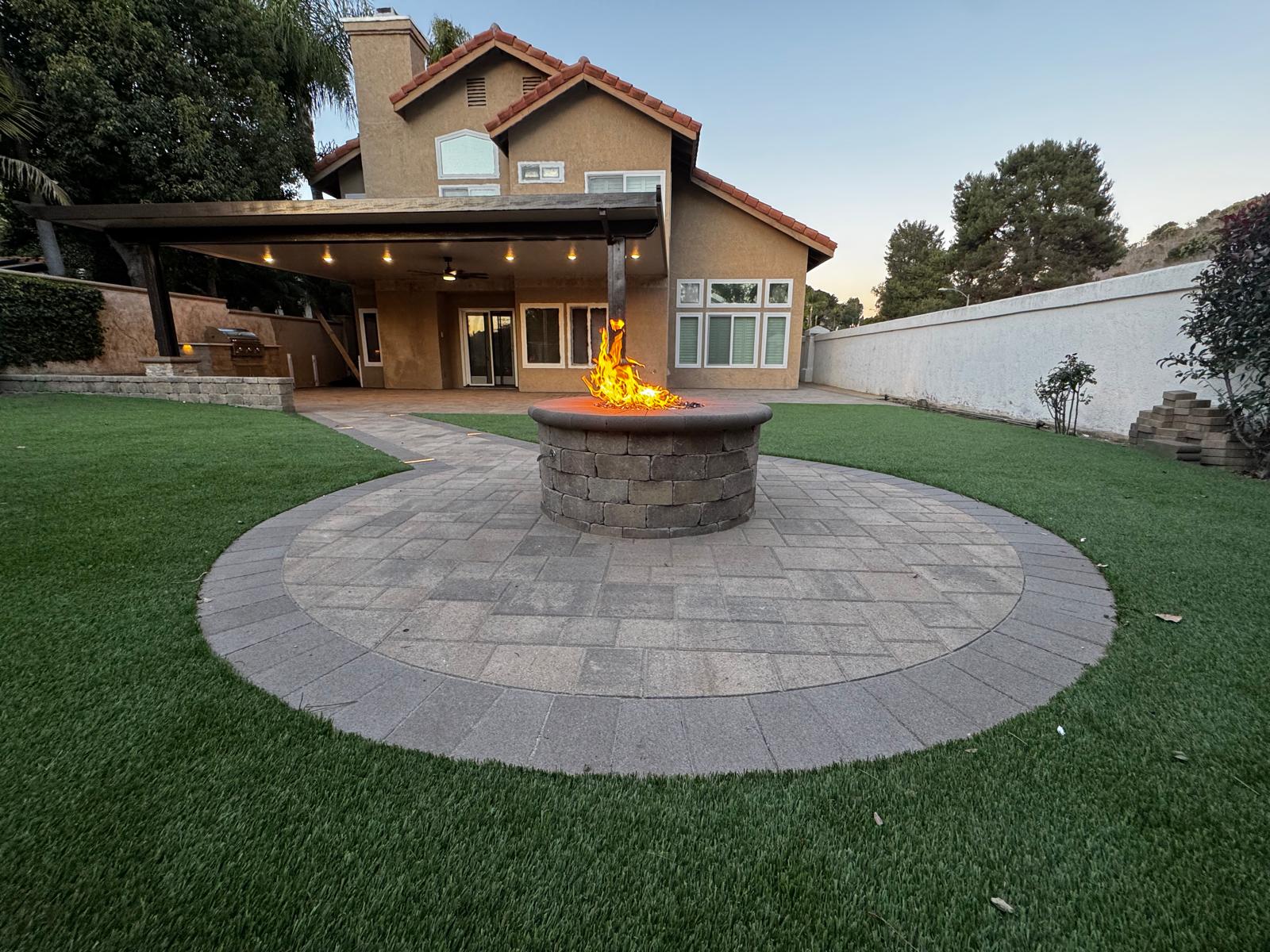
Sustainable Practices for Lawn Turf in Hot Climates
Drought-Tolerant Landscaping Integration
Modern Orange County landscapes often incorporate lawn turf for hot climates as one element within a broader drought-tolerant design:
- Reducing total lawn area to focus on functional spaces
- Bordering turf with native plant beds to create transition zones
- Using permeable hardscaping for patios and walkways
- Installing rain gardens to capture and utilize runoff
- Positioning lawn areas to maximize recreational value
This integrated approach allows homeowners to enjoy the benefits of lawn turf while significantly reducing overall landscape water requirements.
Soil Health Management
Long-term success with lawn turf for hot climates depends on maintaining healthy soil through:
- Annual aeration to relieve compaction
- Topdressing with compost to improve microbial activity
- Leaving grass clippings to return nutrients to the soil
- Monitoring and adjusting soil pH as needed
- Avoiding excessive chemical applications that harm beneficial organisms
Healthy soil ecosystems naturally increase your lawn’s resistance to drought, disease, and other stressors common in hot climates.

SEO Considerations for Lawn Service Providers
For landscape professionals serving Orange County homeowners, optimizing online content for “lawn turf for hot climates” involves:
- Creating locally-focused content addressing Orange County’s specific climate challenges
- Developing separate landing pages for front yard and backyard renovation services
- Including before/after galleries showcasing successful hot-climate turf installations
- Publishing seasonal lawn care guides specific to Southern California conditions
- Incorporating customer testimonials highlighting drought-resistance performance
These strategies help connect service providers with homeowners searching for expertise in selecting and maintaining lawn turf for hot climates.

Conclusion: Selecting the Ideal Lawn Turf for Your Orange County Property
Choosing the right lawn turf for hot climates requires balancing several factors specific to your Orange County property:
- Available sunlight across your landscape
- Existing irrigation infrastructure
- Soil type and drainage conditions
- Expected traffic and usage patterns
- Desired maintenance commitment
- Water conservation goals
By carefully evaluating these considerations and selecting appropriate turf varieties, Orange County homeowners can create beautiful, functional lawn spaces that remain resilient through Southern California’s challenging climate conditions.
The perfect lawn turf for hot climates does exist—it simply requires thoughtful selection, proper installation, and consistent maintenance tailored to your specific property conditions. With the right approach, your Orange County home can showcase a vibrant lawn that enhances your outdoor living experience while remaining environmentally responsible.
